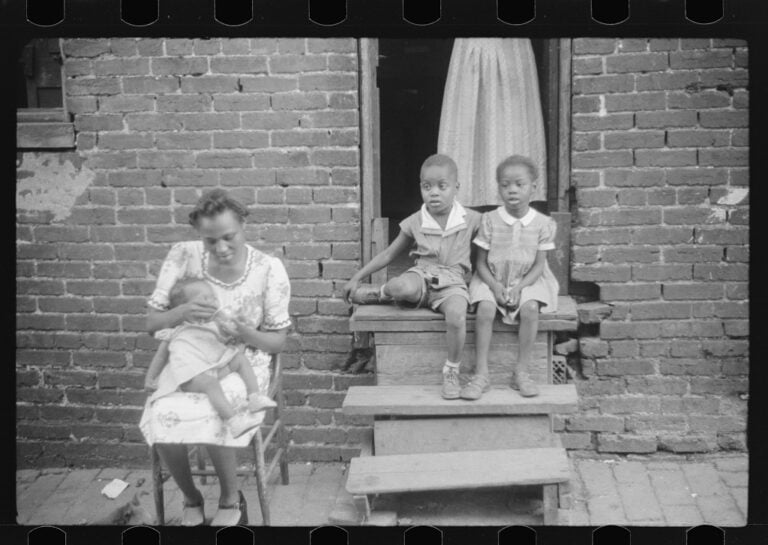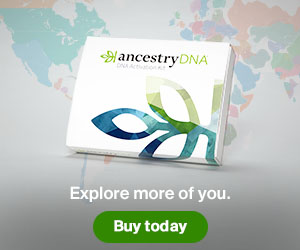We all have those forefathers who make us want to pull our hair out. You understand, the ones we just can’t discover key pieces of information about– like a birth or death date? Finding a date of birth can be especially challenging since usually only ages are listed on old records. And even on records that normally do list a birth date this detail is often left blank due to the fact that the informant didn’t have the required info (this prevails on death certificates).
Finding an actual date of birth (rather than an approximated year) is crucial to your research study. This short article will go over a few common places to discover birth dates and then delve into several sources that are often overlooked by researchers.
Some Typical Sources for Birth Records
Naturally, an approximated birth date can be collected from numerous sources– and ages can be discovered on a wide array of files– not least of which in the U.S. census (which even notes birth month sometimes.) Gather this details when you can since it will help you discover more detailed dates down the roadway.
The best and most precise location to find an ancestor’s actual birth date is in the record closest to the occasion– the birth certificate. You will, however, usually need to know your forefather’s moms and dads’ names to find this file– particularly because you do not have a birth date. If you understand your forefather’s birth area and basic age (such as from a census) you might be able to discover a certificate without parental details however make sure you have the correct record.

Dates when essential records were first recorded vary from place to place, as do their availability online and in general. If you are looking into in the U.S. this list of state resources will assist you learn who holds the record you require and this article will help you find it offline if it is not yet digitized.
Next to a birth certificate, a baptismal record, or record of a birth with a local church, is your best option. You will require to do some research study to determine who might hold such a record for your forefather– if one exists at all.
If you can not find a birth record, or if you do not have sufficient details to start a look for one, you will require to try to find this info in other crucial records, such as marital relationship or death certificates. Once again, utilize the websites in the list above for U.S. searches. Details about finding records in the UK can be discovered here and Canada here.
Gravestones are another great location to find a birth date– although you will require some information about a person’s death to locate this. Gravestones are also notoriously undependable so take the info you discover as an idea to help you locate a more trusted source. Read this short article for help with cemetery research study.
If you have exhausted these common sources and still haven’t discovered your forefather’s actual date of birth, you will wish to examine the alternate sources revealed below.People with African-American or Native American forefathers might have specific trouble finding birth dates at different points in history. Please review our African-American research study guide here for assistance, and discover some details on researching your Native American forefathers here.
1. Old Town Histories, Family Pedigree Books and Compiled Genealogies
Old books are a wonderful source of genealogical info and family pedigree and surname books can be a goldmine, particularly when looking into ancestors before crucial records were kept. Birth dates are often present in such collections.
Lots of towns have had books written about them also, recording the founding, the early inhabitants and the advancement of the area. These books were popular in the 19th and early 20th centuries and were typically written for turning point dates, such as centennials of the starting of these towns. Included in many of these books are the names and birth dates of the early settlers.
A fine example is the book Woodbridge and Vicinity by Rev. Joseph W. Dally. This book, first published in 1873, records a comprehensive history of Woodbridge Township, New Jersey. Consisted of in the back are appendices that list birth, marriage and death records from the 1670s through the 1750s. Because records from this period are very hard to find, a listing like this is exceptionally important. The picture listed below programs a sample of the birth records listed in Woodbridge and Vicinity. The birth record for my forefather, Jonathan Dilly, is at the top.
To discover old town histories, go to the Digital Public Library of America (DPLA) website and use the keywords “town history” in addition to the name and state of your town.
2. Verification Records
We all know to look in church baptism records for birth dates, however if the baptism record isn’t there, the confirmation record might be a great alternative. These were records for children who were baptized as infants and finished their spiritual education by validating their baptisms as teens.
Verification was (and still is) an essential occasion in both Catholic and Protestant churches, so in-depth records still exist. These records generally include a birth date together with the verification date. Here is the confirmation record of my hubby’s great-great granny, Amalia Fuchs
Confirmation Record Amalia Fuchs.
Although this record is from West Prussia and is composed in German, you can clearly see her birth listed in addition to her confirmation date. Old church records normally include listings of verifications together with the other records, so if you can’t find the confirmation certificate, examine the church records if they are readily available.
Lots of online repositories, such as FamilySearch and Ancestry, offer church records– as do regional historic and genealogical societies. Contact these companies for assistance locating records. If the church still exists your best choice lots of be to call them straight to learn how to gain access to records (many might be offline).
3. Funeral Service Home Records
If your forefather died in the late 19th century or later on, you may be able to discover the birth date through a funeral home record. As funeral services became more elaborate in the late 1800s, funeral homes were developed to take care of the details.
Funeral homes were usually household run organizations, but the morticians who owned them kept comprehensive records. If you know that your ancestor’s funeral was arranged by a funeral home, you can call them in composing to ask if a record exists and what you need to do to obtain a copy.
If the home is out of company, their records might still exist in a library or as part of an archive. The picture below shows sample records from the Baum-Carlock-Bumgardner Funeral Home of Mineral Wells, Texas, which is now part of the collection entitled Rescuing Texas History, 2013. The collection is housed in the Boyce Ditto Public Library and available through the site Portal to Texas History at texashistory.unt.edu.
Sample Funeral Home Record with Date of Birth
These records, from 1937, consist of both the birth and death dates of the people who died.
4. Poorhouse, Hospital, Asylum and Criminal Records
Individuals who were admitted to healthcare facilities, poorhouses, workhouses, or asylums were usually taped in some type of journal. Ages, and in some cases birth dates, were consisted of in these records. In addition, children who were born in these institutions were also tape-recorded.
Here is a sample of a consumption record page from the Tewksbury Almshouse in Tewksbury, Massachusetts. This record, from 1883, reveals just the ages of the people confessed to the almshouse but on the bottom of the page is the birth record for Mary Lee, born in the almshouse July 7, 1883. The kid mother and the mom’s admission number are listed.
Tewksbury Almshouse Intake Record
These records from the Tewksbury Almshouse were accessed through the DPLA. Find out more about utilizing medical facility and asylum records for genealogy here.
Like poorhouse records, old rap sheets might list the ages or perhaps birth dates of people being charged. Read this short article for help finding and using rap sheets.
5. Military Records
Specific types of military records are excellent sources for birth dates. Draft registration cards and pension records usually list the birth date of the individual– such as this World War I draft registration record for Melvin M. Borchardt of Tampa, Florida.
WWI Draft Registration Record
Big collections of these records can be accessed through FamilySearch at www.familysearch.org. Others can just be found on Ancestry, Fold3 or other paid sites.
Read this guide to utilizing WWI and WWII draft records in your research study.
Information about Civil War records that can be found totally free online can be found here and those for the American Revolution here.
6. Personal Papers, Letters and Diaries
Often the best place to find a missing out on birth record is in that old box of letters in the attic (or in a digital attic, as the case might be).
People typically referenced the birth of a brand-new member of the household in journal entries or letters to other member of the family. Often, lacking a household bible, families just taped the births of relative on whatever they had lying around. My great-grandfather made a note of the names and birth dates of all his children on a plain paper. If you are fortunate enough to have among those relatives who saves whatever, you may be able to get in touch with that individual and ask to check out their collection of old family papers.
Not all of us have this advantage, of course, however many collections of household papers have been contributed to libraries, museums, and historical societies and a few of these have been digitized. It deserves completing an online search to see if your ancestors are mentioned in a collection of individual papers. While you might not be able to see every scrap of paper online, you may have the ability to find the library or archive where the collection is saved so that you can search it face to face.
Try to find such collections by means of ArchiveGrid or in online libraries like Internet Archive, the DPLA and Hathitrust. Type “family documents” or “individual papers” and a surname of interest in the searches on these sites.
The following photos show the title page and table of contents of the Family Papers of the Day and Hartsinck households, modified by Samuel H. Day in 1911. As you can see in the table of contents, the work includes pedigrees for both families, so birth dates would be consisted of here.
Day Family Papers Day Papers Table of Contents
There are many other possible records where you may be fortunate sufficient to find a birth date. Study the area and time period you are investigating to better understand what documents are offered to you and eventually you are bound to find the info you need.
Janet Meydam is a freelance author who has over 40 years of experience in genealogy as a pastime. Her understanding includes looking into many different records from the United States, Germany, and Poland. She is also a co-author of her parents’ family history book “I Come from a Long Line of Dilleys.” Janet works as an occupational therapist. She and her partner Tim have 3 adult children and live in Wisconsin.

Leave a Reply